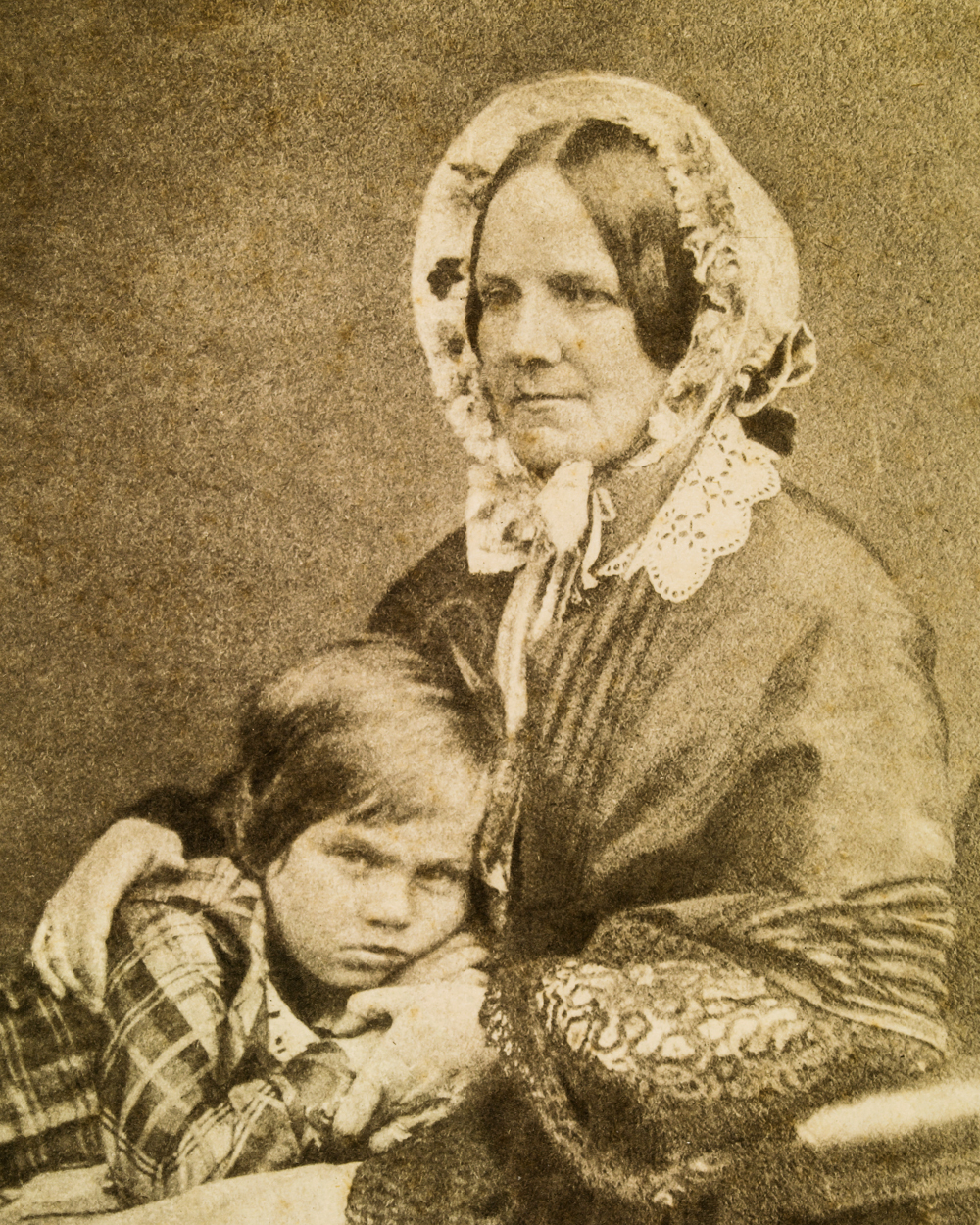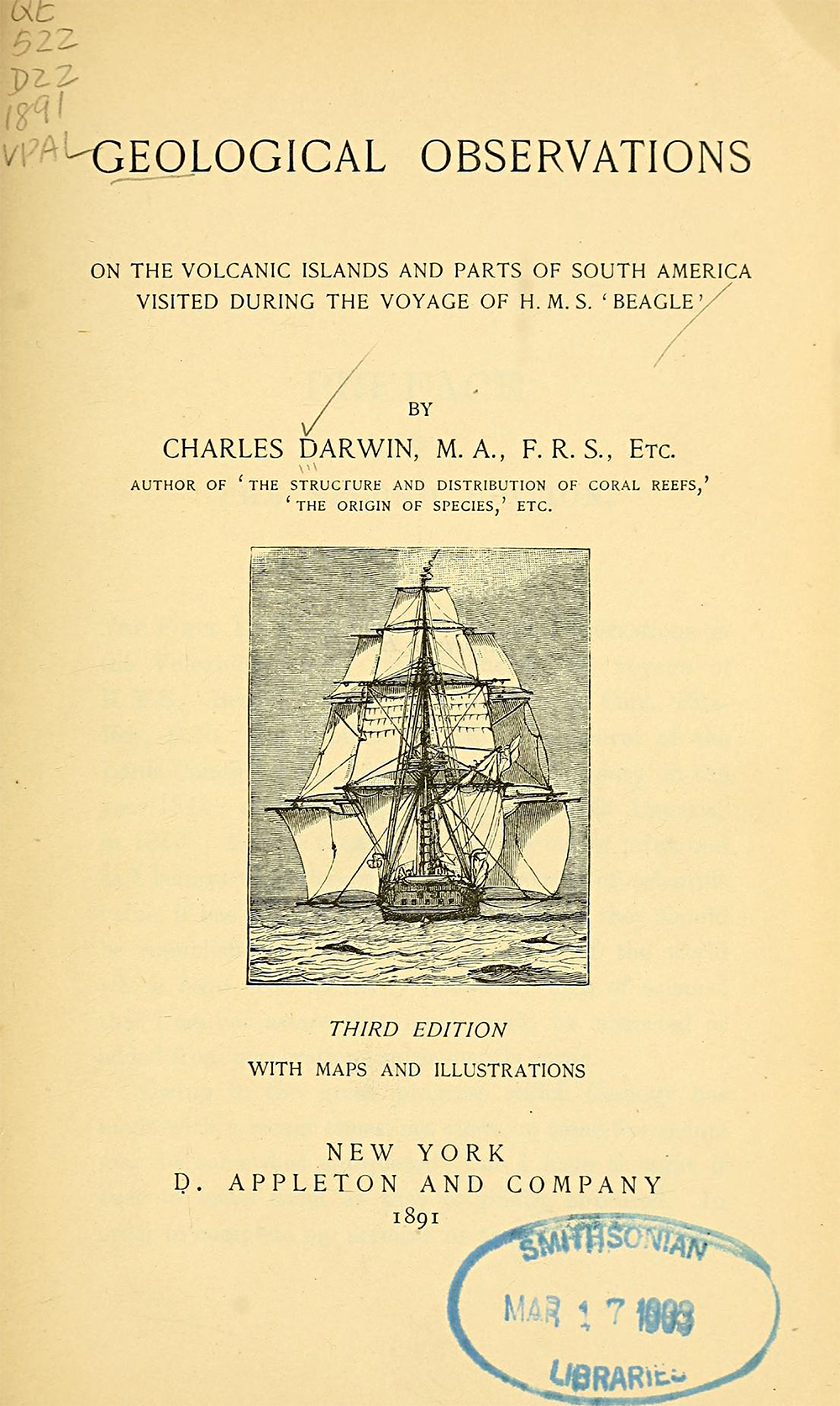Is glad of CD's appointment and hopes it will be a source of happiness and honour.
Answers a query about books.
Suggests CD go to Geological Society, present himself, as AS's friend, to William Lonsdale and study the Society's collection.
Tells CD of his work in Wales; includes a diagram and explanations.
Ramsay's death a grievous loss.
Writes of voyage and his work in natural history: geology, collecting insects (freshwater beetles and spiders at Botofogo Bay); life at sea, sublime views ashore.
His first letter to JSH since December. Recounts his seasickness, geologising and marine collecting at St Jago [Santiago, Cape Verde Is.]; his first tropical forest. Collecting small insects from the tropics. His Welsh trip with Sedgwick has been extremely valuable.
The termination of the voyage has been decided - September 1836.
The earthquake of Concepción.
His geological observations (since November). Can now prove both sides of the Andes have recently risen to considerable heights.
Zoological collection.
Plans to cross the Cordilleras.
Comments on [MS of] CD's paper ["Elevation on the coast of Chili" (4 Jan 1837), Collected papers 1: 41-3].
Invites CD to dinner. "Don't accept any official scientific place, if you can avoid it".
Thanks Horner for his letter [about Volcanic islands].
Discusses craters of elevation with respect to the views of Leopold von Buch and Élie de Beaumont. Compares Lyell's views to those of continental geologists. Mentions reading A. D. d'Orbigny [Voyage dans l'Amérique méridionale (1835-47)].
Encloses note from Emma to Mrs Horner, inviting the Horners to visit Down.
Has read TFJ's letter on Glen Roy. His arguments seem conclusive. CD gives up the ghost. "My paper is one long gigantic blunder." How rash it is "to argue that because a case is not one thing it must be some second thing which happens to be known to the writer".
Asks GHD to look in William Thomson's book [W. Thomson and P. G. Tait, Treatise on natural philosophy, vol. 1 (1867)] to see how many million years ago Thomson says earth's crust solidified. CD is troubled by "brevity of the world", because pre-Silurian creatures must have lived during endless ages "else my views wd be wrong, which is impossible - Q.E.D.".
Expresses his feelings following the death of Charles Lyell.
Responds to comments on geology of Florida.
Discusses coral reefs and paper by John Murray ["On the structure and origin of coral reefs and islands", Proc. R. Soc. Edinburgh 10 (1880): 505-18].
Comments on AA's paper ["Paleontological and embryological development", Proc. Am. Assoc. Adv. Sci. 29 (1880): 389-414].
Darwin Correspondence Project
darwin@lib.cam.ac.uk
© University of Cambridge 2022
Website by Surface Impression



© 2024 University of Cambridge


Darwin's work on species shows many marks of his geological training. While he was attached to the Beagle from 1831 to 1836, Darwin actually spent about two-thirds of his time ashore, where geology was his single most frequent pursuit. After his return, he published three books on geology and developed a major theory of crustal uplift and subsidence which became the basis of an innovative explanation for the origin of coral reefs. Geology provided the long time span needed for a slowly acting process like natural selection to work, and tools for the reconstruction of processes operating in the distant past. In the last book published during his life, Darwin returned to geological studies by studying the action of worms, demonstrating the profound impact that these seemingly insignificant creatures had in the economy of nature.